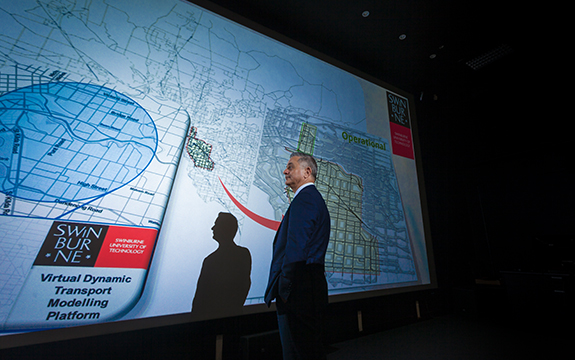A driving force for change

In Summary
This article originally featured in Swinburne's Research Impact magazine.
Work by Professor Hussein Dia has suggested that more than 80 per cent of cars could come off the road if fleets of shared, self-driving, electric vehicles become reality. As Program Leader of the Future Urban Mobility program at Swinburne’s Smart Cities Research Institute, Dia is advising Australian road regulators on how to plan for this future.
In Australia, he said, data shows that peak car-sharing occurred in all major cities in roughly 2004, at least in terms of passenger-kilometres per capita. Increasing urbanisation, environmental awareness, and cost, all contributed to this fact.
Dia sees a future of fleets of shared self-driving vehicles accessed through apps powered by optimisation software calculating the most efficient route for multiple passengers.
In 2017, Dia’s team simulated what could happen to Melbourne if autonomous, taxi-like vehicles were available. They found that if the majority used self-driving shared vehicles, the number of vehicles on the road could drop between 43 per cent and 88 per cent.
“We can meet our demand for mobility using only 12 per cent of the existing vehicle fleet,” he said. It could also free up as much as 83 per cent of on-street parking and significantly lower carbon emissions, he noted.
Dia cited the success of the recent addition of the uberPOOL function to the Uber app service, in which a driver picks up and drops off multiple passengers going in the same direction.
The line will increasingly be blurred between the bus and a shared driverless car, he added. Ride-sharing is already much cheaper than taxis or single-passenger Ubers. If ride-sharing becomes common using driverless cars, Dia pointed out that the cost could come down by as much as 70 per cent, bringing a ride-sharing service close to or below current public transport costs.
Dia also looks forward to a reduction in the 3,000 people that die daily in accidents caused by driver error globally. “We find that 90 per cent of road accidents are due to human error, so it makes perfect sense to remove the driver, which is the key source of error.”

